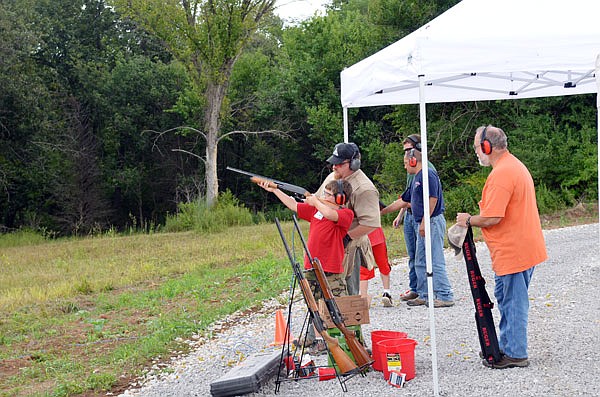The Mourning Dove is Missouri's most popular migratory game bird species.
Their population, both nationwide and in Missouri, is stable with no evidence of a serious change in abundance. The United States Fish and Wildlife Service estimates the population at approximately 279 million mourning doves.
Dove season opens Sept. 1 in Missouri and runs through Nov. 29. Keep in mind doves are migratory and head south when temperatures drop. Temperature, combined with hunting pressure, tends to dictate better dove hunting toward the beginning of the season.
Permits required to legally hunt doves are a small game hunting permit and a migratory bird hunting permit. The limits for doves are 15 daily and 45 possession.
A mature dove is only around 12 inches long, posses a wingspan of 18 inches and weighs a whopping six ounces. Doves are definitely small targets when you consider they reach flight speeds of up to 55 miles per hour. Knocking enough of them out of the air to fill a limit is a tough task.
Dove hunting is a challenging and exciting experience. When the birds are there, the action can be fast and furious. Connecting with these pint-sized rockets isn't. One would do themselves a favor to spend some time practicing by shooting clay targets before hitting a dove field.
The equipment needed for dove hunting is pretty minimal. As far as firearms go, any 12-, 16- or 20-gauge shotgun will work fine. Take plenty of shotgun shells with you, because you'll need more than you think. Size 7 or 8 birdshot will suffice. Make sure you know if the property you are hunting requires the use of steel shot or not. Many public properties, including 21 conservation areas, require the use of steel shot only.
When deciding where to situate yourself and your party, try to locate an already harvested crop field with a water source nearby. Doves roost overnight and often fly to water early in the morning and again at dusk. Keep the sun at your back. Doves are hard enough to hit without blinding yourself by looking into the sun. Camouflage isn't necessary, but doves do have great eye sight.
Hunter orange is not required, but is a good idea when hunting in a group. Sitting still and breaking up your outline with natural brush or sitting next to a structure of some sort will bring more doves into range. Stay still until they are right on you. Don't stand until you're ready to shoot.
Doves are usually found in good numbers around harvested agricultural fields. Scouting early and late in the day, when doves are moving to and from fields, especially freshly picked fields, is a guideline for success. Look on power lines and fences for doves. They'll hang around roosting areas and water holes, too.
See you down the trail.
III
Brandon Butler, the executive director for the Conservation Federation of Missouri, is an outdoors columnist for the News Tribune. Contact him at [email protected].

